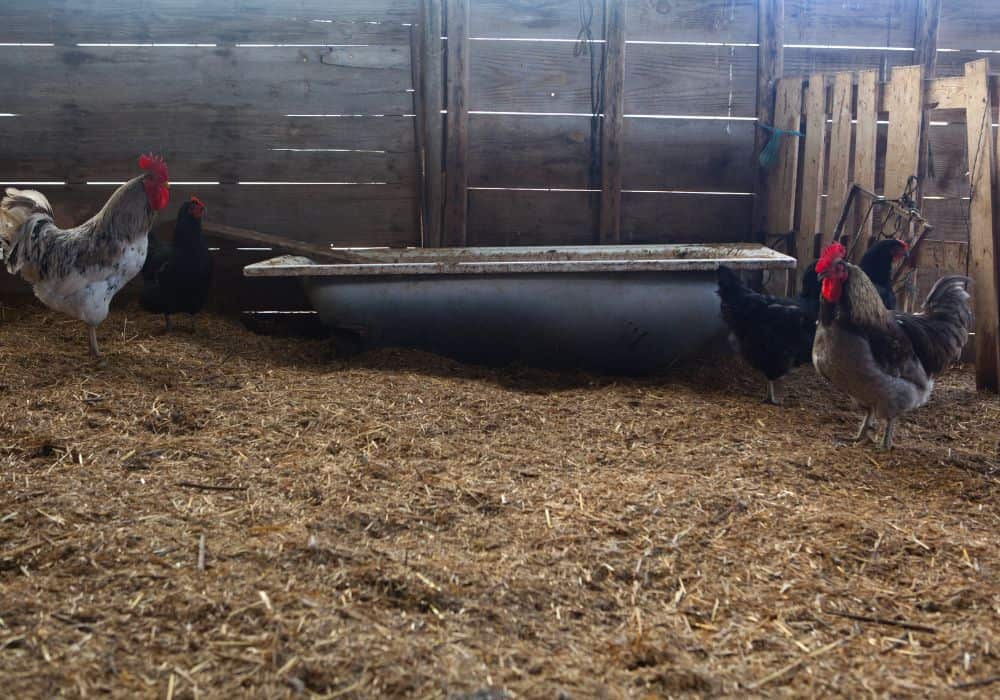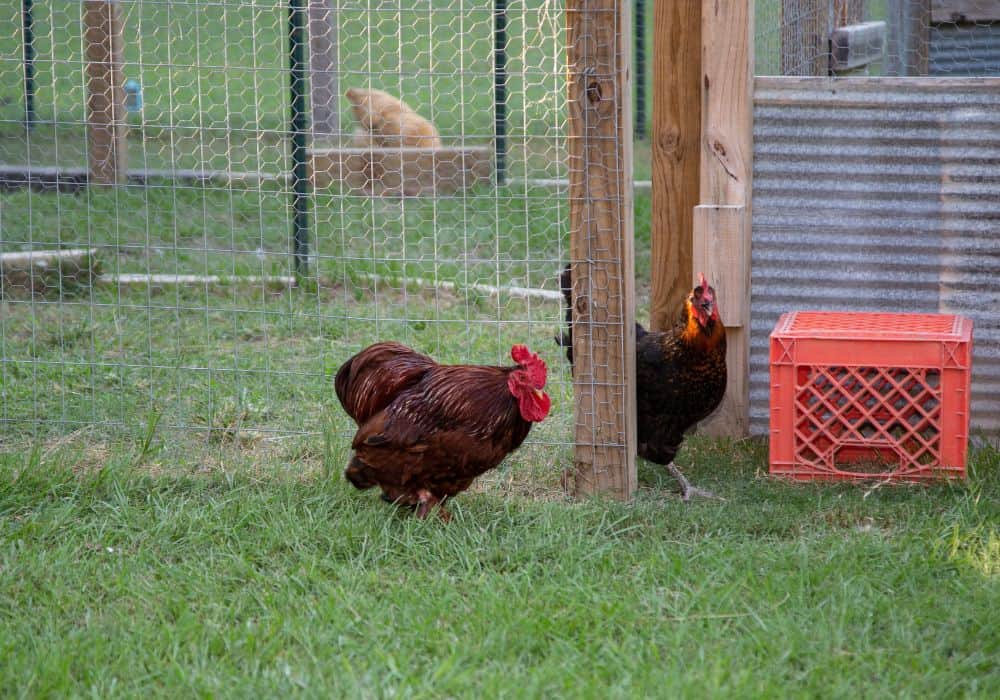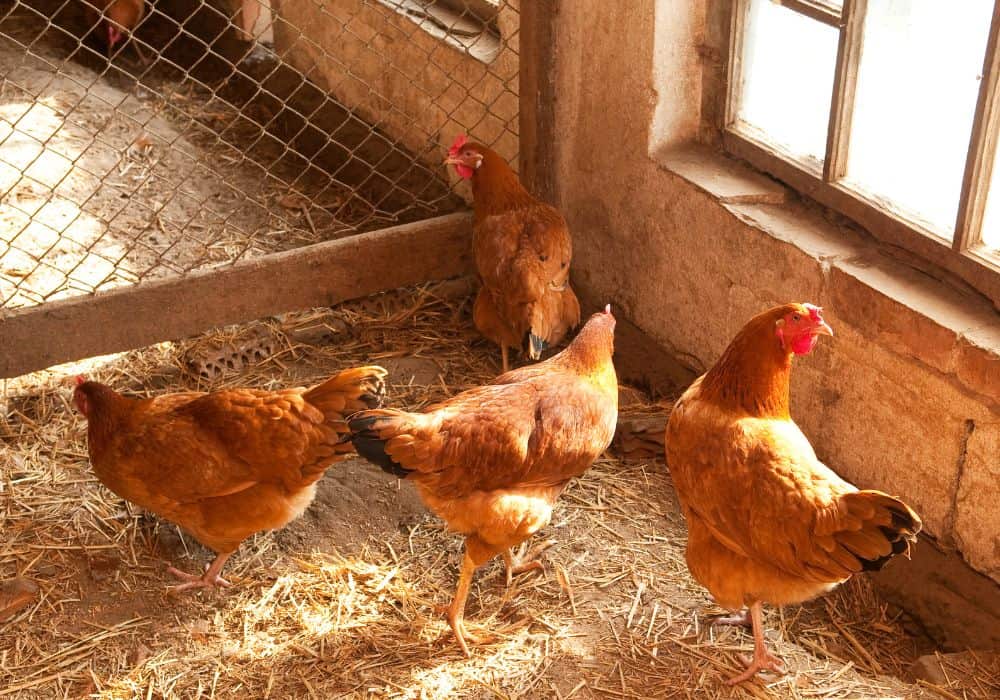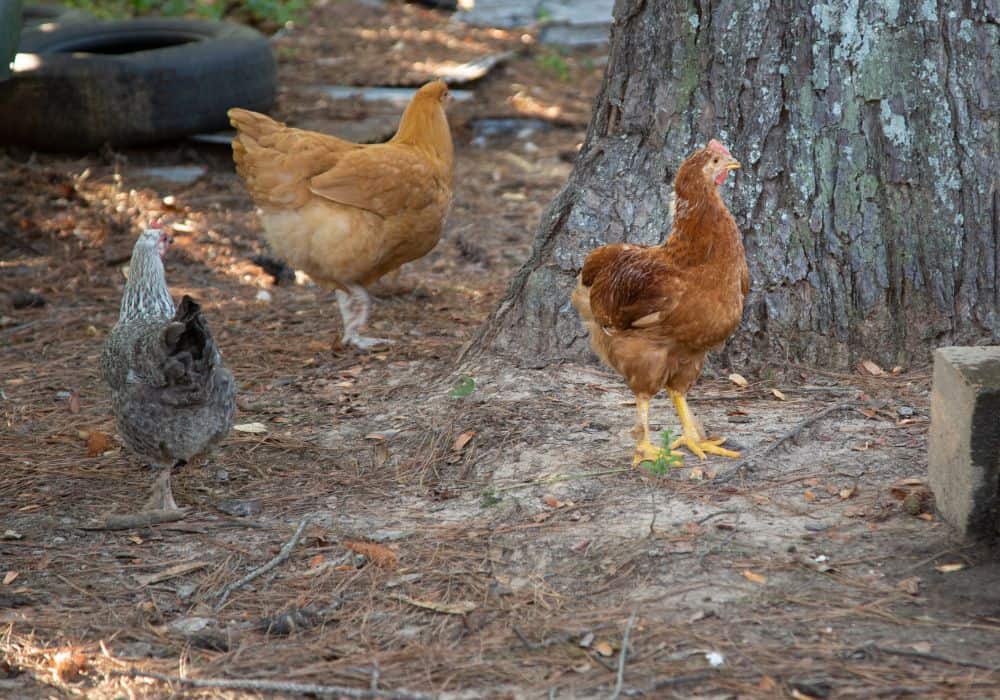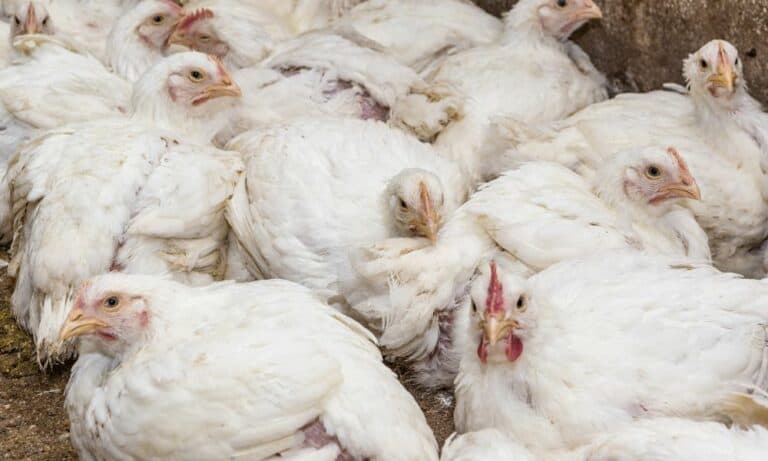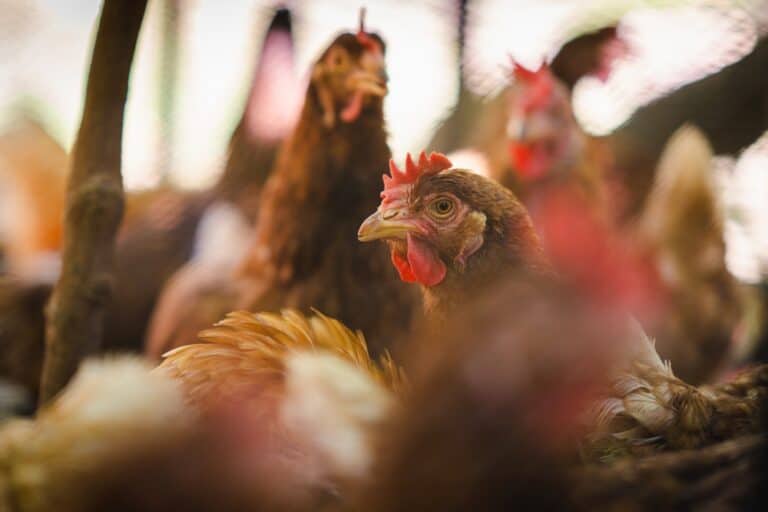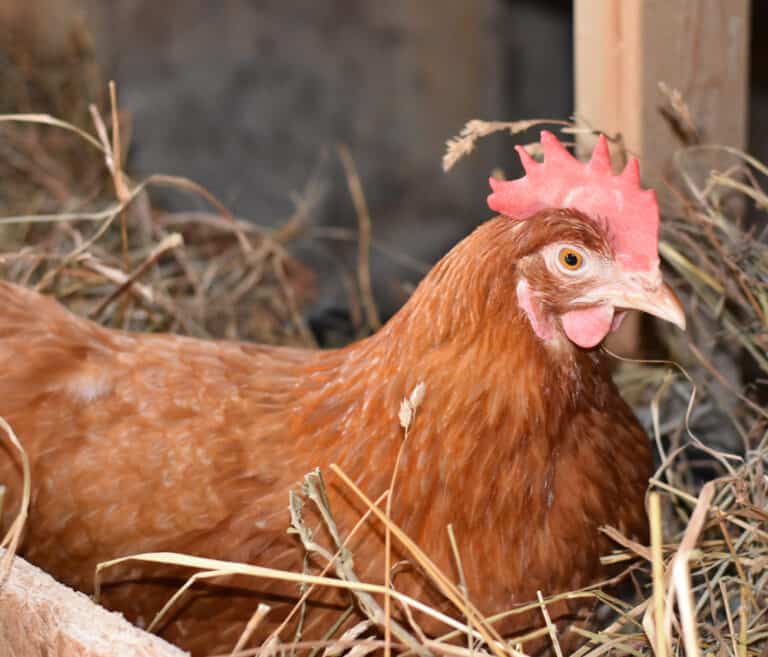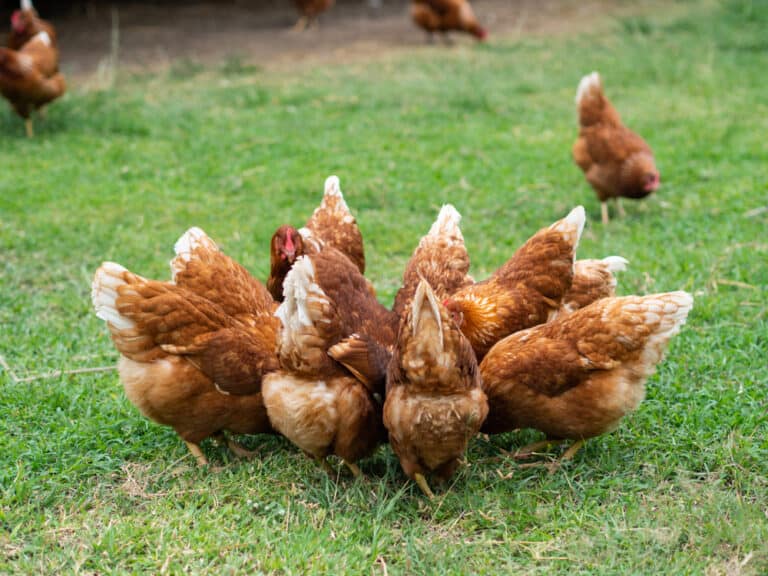Did you just buy a flock of chicks? Are you curious about how many roosters and hens you have? Well, the good news is most chicken breeds have distinct physical features to help you identify the gender quickly.
But, if you’ve never sexed chicks before, the task may seem a bit difficult. You’re likely to hesitate and doubt your findings. Don’t worry, though!
We’ve carefully formulated this post to give you as much information as possible on how to tell a rooster from a hen. From basic differences to sexing methods, here’s everything you need to figure out your chick’s gender like professionals!
Rooster VS Hen: Basic Differences
Before we dive into the details, there is one thing you need to know – both roosters and hens are chickens. A rooster is an adult male chicken, whereas a hen is an adult female chicken.
Chickens mature a year after hatching. So, you won’t call a male chick rooster until he turns one year old. Instead, you will call him a cockerel. Similarly, a female chick is called a pullet until she turns one.
| Chicken Age (in Years) | Male | Female |
| Less than 1 | Cockerel | Pullet |
| 1+ | Rooster | Hen |
Physical Differences
Usually, you can easily tell a rooster from a hen at a glance. The male chickens are bulkier, heavier, and taller than the females. But, in some chicken breeds, the appearances are almost the same.
So, let’s have a look at some major physical differences between roosters and hens.
1. Comb & Wattles
Both comb and wattles are the fleshy, red flaps of skin on the chickens. The comb is on top of the head, whereas the wattle hangs on either side of the throat. Sometimes, it may start at the beak and hang down.
In roosters, the comb and wattle are impressive. They are large, firm, and waxy to touch. Since they are used to attract females for mating, the color of a rooster’s comb and wattle is also striking red.
Comparatively, a hen’s comb and wattle are much smaller and softer. The color is usually pale red, but it may fluctuate depending on the egg production.
For example, a pink comb and wattle mean the hen hasn’t started laying eggs. But a red color means the hen has begun its laying phase.
2. Feathers
Feathers are one of the easiest ways to distinguish between a rooster and a hen. Here’s what to look for in their feathers:
- Hackle – the feathers on the back and neck of a chicken. In roosters, the hackle feathers are long, pointy, and fine. They are often very bright in color too. But, in hens, the hackles are rounded and pale.
- Saddle – the feathers on the rump and base of a chicken’s tail (nearby wing feathers). These are typically more pronounced in roosters. You’ll find them to be longer and sharper than the rest of the feathers. Hens have the same size of feathers all over the body, including the saddle. So, most people don’t count them as different and would claim that hens do not have saddle feathers.
- Tail – all chicken breeds have a tail, except for the araucana chicken. Like all other feather types, the tail feathers are rounded in hens and pointed in roosters. However, roosters also have sickle feathers. These are long, curved feathers that arc down in the rooster’s tail. Sometimes, the color will also be different than the rest of the tail.
3. Legs
Generally, rooster legs are thicker and heavier than hens. But the biggest difference is the presence of spurs.
A spur is a tiny outgrowth from the shank bone in the legs of a rooster. It’s covered with a hard, keratin layer that makes it a useful weapon. Roosters often use their spurs to fight enemies and protect themselves.
4. Height & Weight
If you want to be 100% confident about your findings, the best way is to use measurement. The height and weight differ greatly between roosters and hens.
| Roosters | Hens | |
| Average Height | 28 to 32-inches | 25 to 28-inches |
| Average Weight | 9 to 11-pounds | 3 to 5-pounds |
Behavioral Differences
Males and females in any specie are designed to act differently. So, apart from physical features, you can also observe your chicken’s behavior to determine whether it is a rooster or a hen.
1. Rooster
A rooster will display leading, authoritarian behavior. It will constantly roam around and keep a watchful eye on the surroundings.
If there is a predator nearby or something unusual happens, the rooster will crow and immediately guide the hens to a safe place. In case someone attacks or challenges, a rooster will stand their ground and fight.
However, this is very rare because chickens like to stay away from all sorts of dangers. They prefer a peaceful and calm environment.
Roosters also demonstrate great scavenging skills. They will look for interesting food and will call the hens to feed by tidbitting. A rooster may even collect the tasty items and drop them near the flock of hens.
When feeding, a rooster will usually wait for the girls to finish. But, if he’s too hungry or aggressive, he may join in as well.
Moreover, a rooster always initiates the courtship. He will select a female and dance around her to get consent. If the hen squats, he will continue the mating process.
In certain circumstances, a hen will ignore the rooster’s dance. If that happens, the rooster will move on to another female in the flock.
2. Hens
Hens are cooperative and quiet. They like to stay together in a group and chat with each other softly. If there’s danger, a hen will cackle or let out a scream to warn others.
But, when a rooster is around, hens will take on a submissive role. They will look up to the rooster for instructions and guidance. They will also prefer waiting for the rooster to find food.
Please note, this doesn’t mean hens are totally dependent on the rooster. A hen can survive well on her own and will perform all of the rooster’s duties – if need be.
However, considering the way nature works, a hen’s strongest domains are nesting and taking care of the chicks. She will spend much time inside the nest box and focus on raising healthy chicks.
During mating, a hen has full command over whether she wants to mate with the rooster or not. If she doesn’t like him, she will move away from his courting dance.
When hens lay eggs, they will also perform a special egg song to protect the baby. Other hens may join in to create these loud, squawking noises (egg song).
Sexing Methods
The above-discussed differences are easy to spot in adult chickens. But, if you’ve chicks, it would be a challenge to tell which ones are pullets and cockerels. Even the most experienced breeders have to wait a few months.
Here are the methods to find the sex of a chick:
1. Auto Sexing
If your chick is purebred, you can identify its gender by looking at the colors and patterns on the body (auto-sexing). However, this method would only work if the chicken breed has different colored males and females.
This doesn’t mean the parent rooster and hen have to be of completely different colors. The slightest variations are enough to make auto-sexing work.
For example, in Buckeye chickens, the male chicks have a cream or white spot on top of the wings. Meanwhile, the females have a dark spot on their heads.
2. Sex Links
Sex linking is a popular way used by professionals. In it, two different chicken breeds are bred to produce easily distinguishable pullets and cockerels.
This differentiation factor may be:
- Color – rooster will have one color and hens will have another. For example, a black rooster will be mated with a brown hen to produce black cockerels and brown pullets.
- Feathers – the rate of feather growth in the first two days after hatching. After the third day, the rate becomes too similar. Most professionals will find out how fast the sex link chickens grow their feathers and compare it with the chicks to identify the gender.
3. Sexual Dimorphism
Most chicken breeders use sexual dimorphism because it’s easy, safe, and accurate. You just have to observe the chick as it matures and use the data to identify the gender.
We’ve already discussed how a rooster differs from a hen in terms of physical appearance and behavior. You will use the same differences for young chicks. However, it’s best to let the chicks turn 2-weeks old first.
The physical and behavioral characteristics will become more prominent. As the chick reaches sexual maturity (one year), the results will be even clearer.
4. Vent Sexing
As the name suggests, vent sexing refers to the identification of a chick’s gender through its vent. The vent is the area from where feces exit the chick’s body. You have to examine it for the presence of female reproductive parts.
If they are present, the chick will become a hen. And if you don’t find them, know that it will become a rooster.
With that said, vent sexing is not recommended. This is a highly sensitive process that requires experience and training. The slightest mishandling can cause serious injury to the chick and even lead to its death.
How to Identify the Gender of Your Chicken At Different Ages?
Now that we’ve explained how to tell a rooster from a hen in detail. Let’s recap a simple way to identify the gender of your chicken at different ages!
1. Chick (0 to 4-Weeks)
Chicks are fragile until they are a week old. So, we don’t recommend vent-sexing them or excessively touching them to find their gender.
But, if you are very curious, determine how the chicks were bred and use any one of the following methods:
- Autosexing if the chicks are purebred or straight-run. You’ll have to examine the new feathers for distinct colors or patterns that females and males of the particular breed possess.
- Sex linking if the chicks are hybrid. You can choose either color or feather-based sex linking. We recommend color sex linking because the results are more accurate.
When the chick is between 3 and to 4-weeks old, you can take assistance from professional vent sexers. If doing it yourself, make sure you are careful and well-educated about the procedure.
2. Teenager (4 to 12-Weeks)
After 4-weeks, your chicks will start to exhibit visible gender-specific physical and behavioral characteristics. You can use sexual dimorphism to observe how they change over time.
A female chick will develop a shorter body with small, rounded feathers. Meanwhile, the male chick will stand taller with long, pointed feathers. The comb and wattle of the male chick will also become larger and redder.
You will also notice that the male chicks will try to lead the females and display typical commanding behavior. The females will engage in submissive and calm behavior. You can use these identifiers to call your chicks pullets or cockerels.
3. Adult
A chicken is termed an adult when it reaches sexual maturity. For males, it is when they start to initiate courtship and mate with a female. And for females, it is when they have successfully laid an egg.
Usually, most chickens take a year before becoming sexually mature. However, some females may lay an egg early. If that happens, know that your pullet is now a hen. You can easily differentiate between adult birds as discussed earlier!
Last Words
To sum it up, you can tell a rooster from a hen by simply observing their physical and behavioral characteristics.
- A rooster is tall and bulky with an average weight of 9 to 11 pounds. The feathers are vibrant, long, and pointy. The comb and wattle are also large. His typical behavior includes crowing, tidbitting, courting, sparring, and guarding the flock.
- A hen is short and light with an average weight of 3 to 5 pounds The feathers are pale and rounded, whereas the comb and wattle are smaller. Her typical behavior includes egg laying, squatting to mate, raising the chicks, and broodiness.
Do you think there are more ways to tell a rooster from a hen? Let us know in the comments below!

